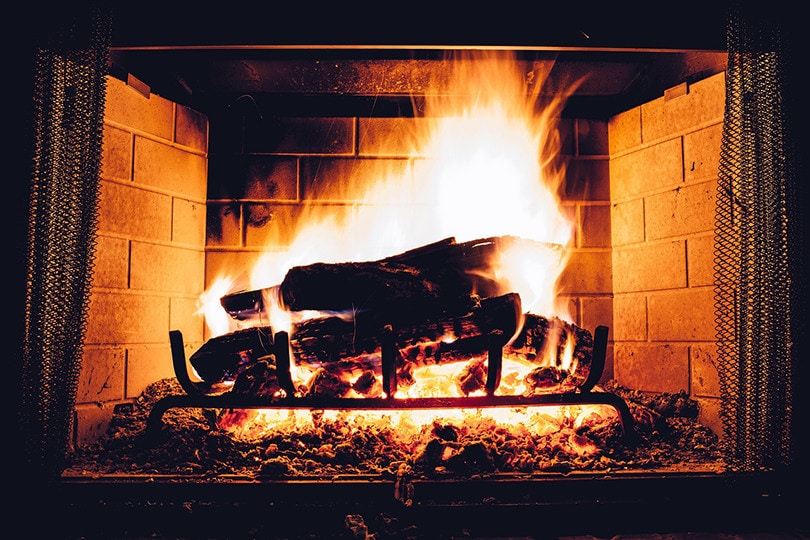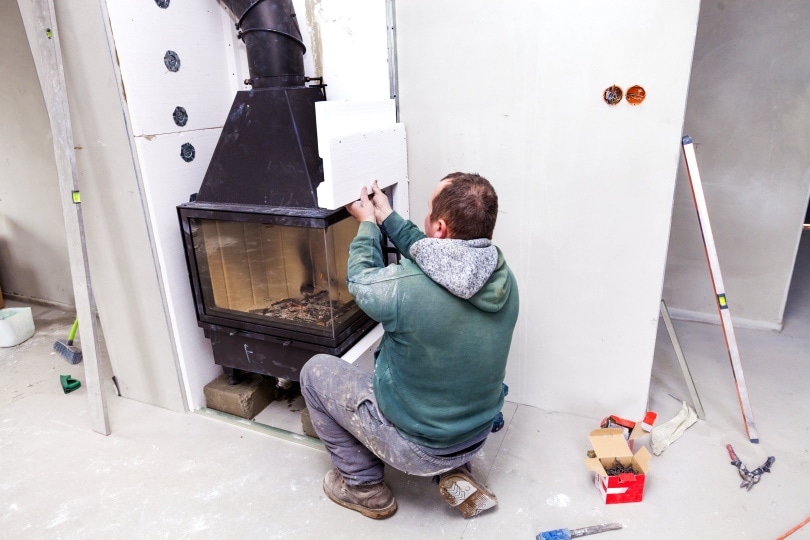7 Signs Of A Cracked Heat Exchanger – What You Should Look For
-
- Last updated:

The heat exchanger in your furnace enables heat to be passed from one liquid in the system to another. If the exchanger is broken or damaged, then it may stop the heating working altogether, which should bad but is the ideal outcome because a cracked exchanger not only reduces the efficiency of your heating system but could lead to unburned gases leaking out from the heating system and into your home.
Repairs may not be cheap, but you should not attempt them yourself, and you need to enable those repairs as soon as possible. Before you can have the exchanger fixed, though, you need to know whether this is the cause of your furnace problems.
Below, we have listed 7 signs that you are dealing with a cracked heat exchanger.
The 7 Signs of a Cracked Heat Exchanger
1. A Yellow Furnace Flame
A furnace flame should burn blue. If yours is blue, then this means that the exchanger is likely working properly and efficiently. However, it may be time to worry if the flame is more of a yellow color. A yellow flame means that all the gases are not being properly or fully burned and a cracked exchanger is one possible cause of this. A yellow flame could also mean a dirty burner, but it is time to have your system checked, in either case.

2. A Dancing Furnace Flame
Similarly, the flame in the burner should be steady and a dancing or flickering flame is another sure sign that you have a problem of some sort. Flickering flames can be caused by a dirty flu system, but it might also be caused by cracks.
3. Increased Soot Production

The incomplete combustion that causes a yellow and flickering flame causes other symptoms, too. It can cause a build up of carbon inside the furnace. Unfortunately, you will have to take the furnace apart to be able to spot this soot build-up, and it is not recommended that you do this yourself in case you damage the furnace or put it back together incorrectly. You could do more harm than good.
4. External Cracks
If you’re having problems with your furnace, you should start by inspecting its exterior. You can do this yourself. Check the whole exterior and look for signs of exterior cracking because if this is present, then it is a very good sign that the interior is also damaged. While this might not specifically pinpoint a problem with the exchanger, it is a sign that your heating systems needs maintaining or upgrading.
5. Carbon Monoxide Warnings

The greatest threat you face if the heat exchanged is damaged or broken, is that it prevents the flue system from being able to adequately vent gases. This can lead to a build-up of carbon monoxide that escapes into your home. It is critical that you have a carbon monoxide alarm installed and working. If the alarm sounds, it means that something is wrong, potentially with the exchanger.
6. A Strong, Pungent Smell
This is usually the first and easiest sign of the problem because you won’t need to go looking for this symptom. If you can smell formaldehyde coming from the furnace, you should turn off the heating and call a professional to have a look. If you don’t know what formaldehyde smells like, it has a pickle-like odor and the stronger the smell the greater the concern.
7. Water Around The Furnace

There are many reasons why a furnace might be leaking water, and, in most cases, it is a sign of a problem with the drainage system. However, it can also be a problem with the heat exchanger. If yours is a standard-efficiency furnace, there should be no water: in which case, this is another symptom that needs immediate attention.
What Happens If A Heat Exchanger Is Cracked?
A cracked heat exchanger is a problem for a number of reasons. It could cause your heating system to effectively switch off. While this means cold rooms, it could be the best possible outcome because it will cut the gas supply and prevent potentially dangerous gases from leaking into your home.
You may experience carbon monoxide leaks: the symptoms of which include coughing, wheezing, sneezing, breathing difficulties, headaches, and nausea, and may lead to unconsciousness and even death. If the flame goes out but gases continue to build up, it can lead to a furnace fire, and if this occurs when you’re asleep, it can prove fatal. It is very important that you have a cracked or damaged heat exchanger seen too as soon as you identify the problem.
What Causes A Cracked Heat Exchanger?
Although the components of a furnace are designed to withstand some degree of heat and extreme temperature changes, those parts can fail. The metal inside the exchanger is one such part. When it is new, it will withstand the extreme heat as well as the huge fluctuations in temperature that it experiences. As the metal ages and undergoes contraction and expansion following temperature fluctuations, it can lose some of its strength and, eventually, crack.
Alternatively, it might be caused by a build-up of gas that, in turn, is caused by a blocked system.
Or, you may have a furnace that is not designed for your size of home. The furnace will be forced to turn on and off more often and this short cycling causes the metal in the heat exchanger to contract and expand more often. The increased pressure this causes may lead to the metal cracking and the heat exchanger becoming damaged.

Conclusion
The heat exchanger is a vital component of your furnace. If it becomes damaged, which may happen simply because of wear and tear or because of some kind of damage to the rest of the furnace system, it can lead to toxic and dangerous gases being emitted in the home. It may even cause a furnace fire. Look for obvious signs of a cracked exchanger and if you do spot any, call a professional furnace maintenance system out to have a look and potentially make any repairs. Heat exchanger repairs can be expensive but are a lot less costly than leaving it to chance.
Featured Image Credit: Pexels, Pixabay
Contents


